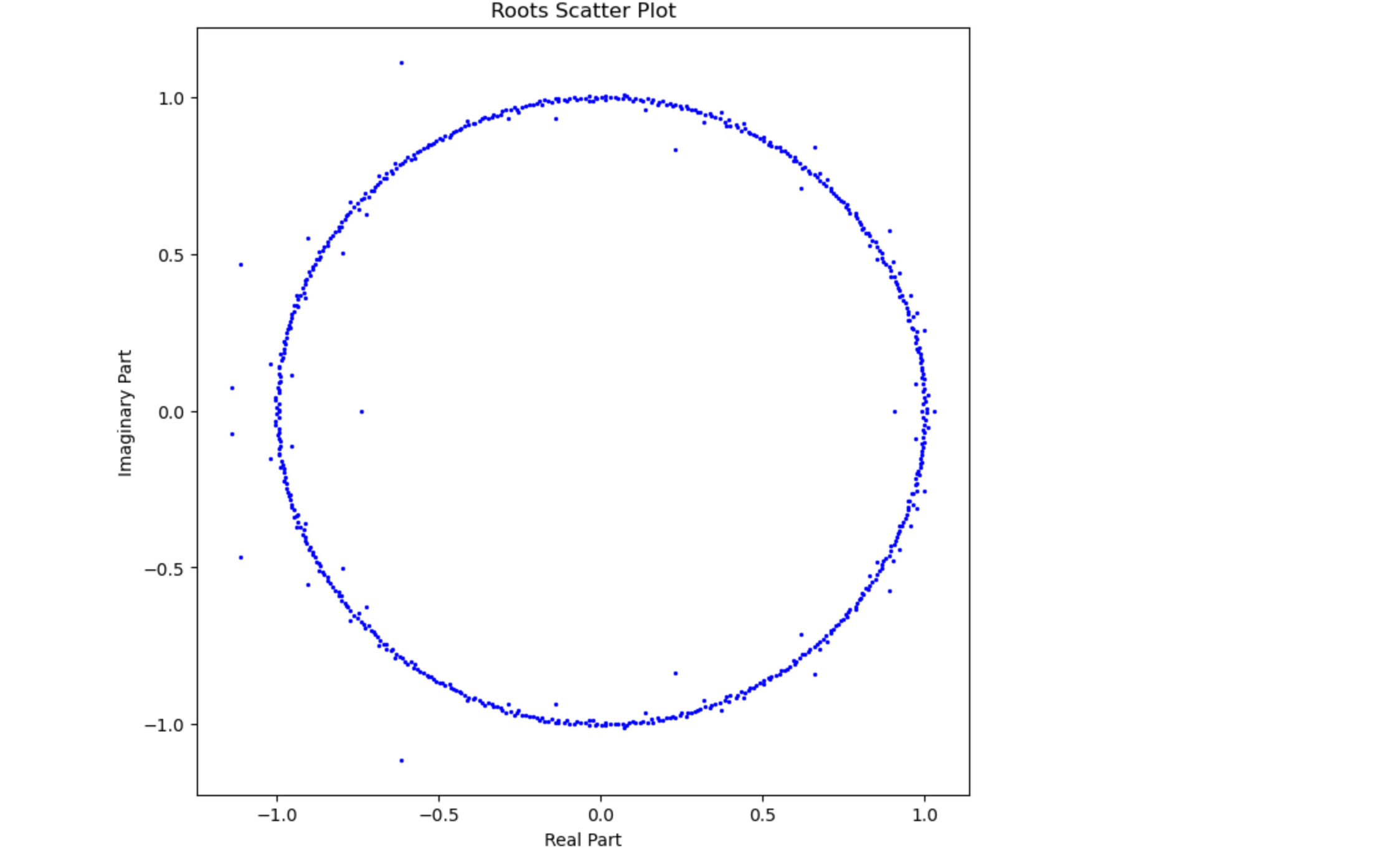Note: This question was unanswered in MSE for a month so posting it in MO.
Let $f(x) = 0$ be an equation of degree $n$. WLOG we can assume that the its coefficients are in $(-1,1)$. This is because we can divide each coefficient by the coefficient with the largest magnitude to make each one of them fall in the interval $(-1,1)$. Assume that the coefficients are uniformly random in $(-1,1)$. It is well known that most of absolute values of the roots have value close to one i.e. the roots tend to form a unit circle around the origin as shown in the figure below for a polynomial of degree $n = 666$.
We observe from the graph that while most of the roots are close to the unit circle, some of them are outside it. I want to find the probability $P(n,x)$ that a roots of a polynomial of degree $n$ lies at a distance $x > 1$ from the origin. To do this, I run a simulation generating random Kac polynomials of degree $n$ and its $n$ roots in each trial and counted the total number of roots across all the trials whose absolute value is $\ge x$.
Question: Experimental data shows that $P(n,1) = \frac{1}{2}$ and for $x > 1$,
$$ \lim_{n \to \infty} \displaystyle n P(n,x) = \frac{1}{2x} $$ as $n \to \infty$. Can this be proved or disproved?
Related: Is the largest root of a random polynomial more likely to be real than complex?

